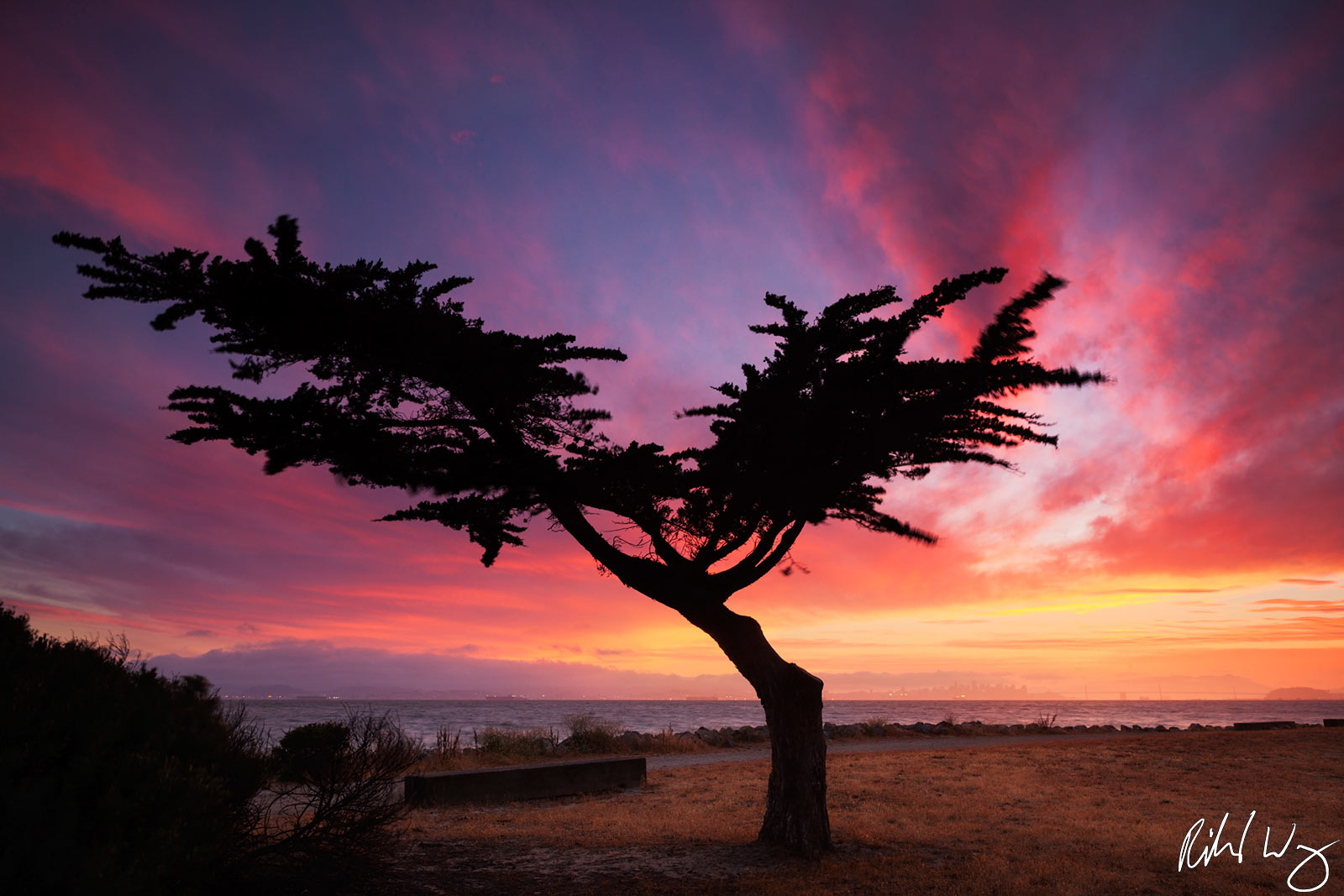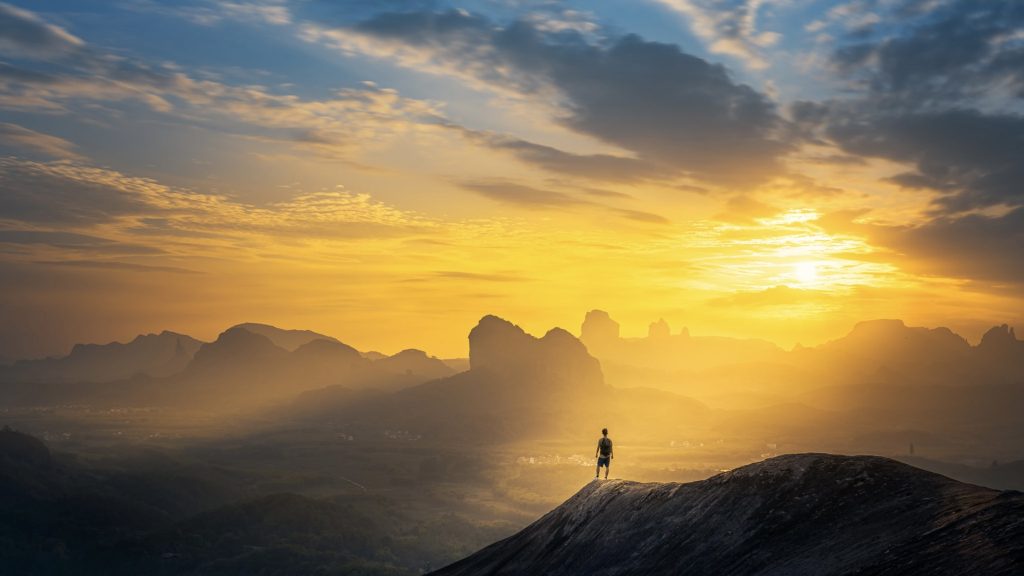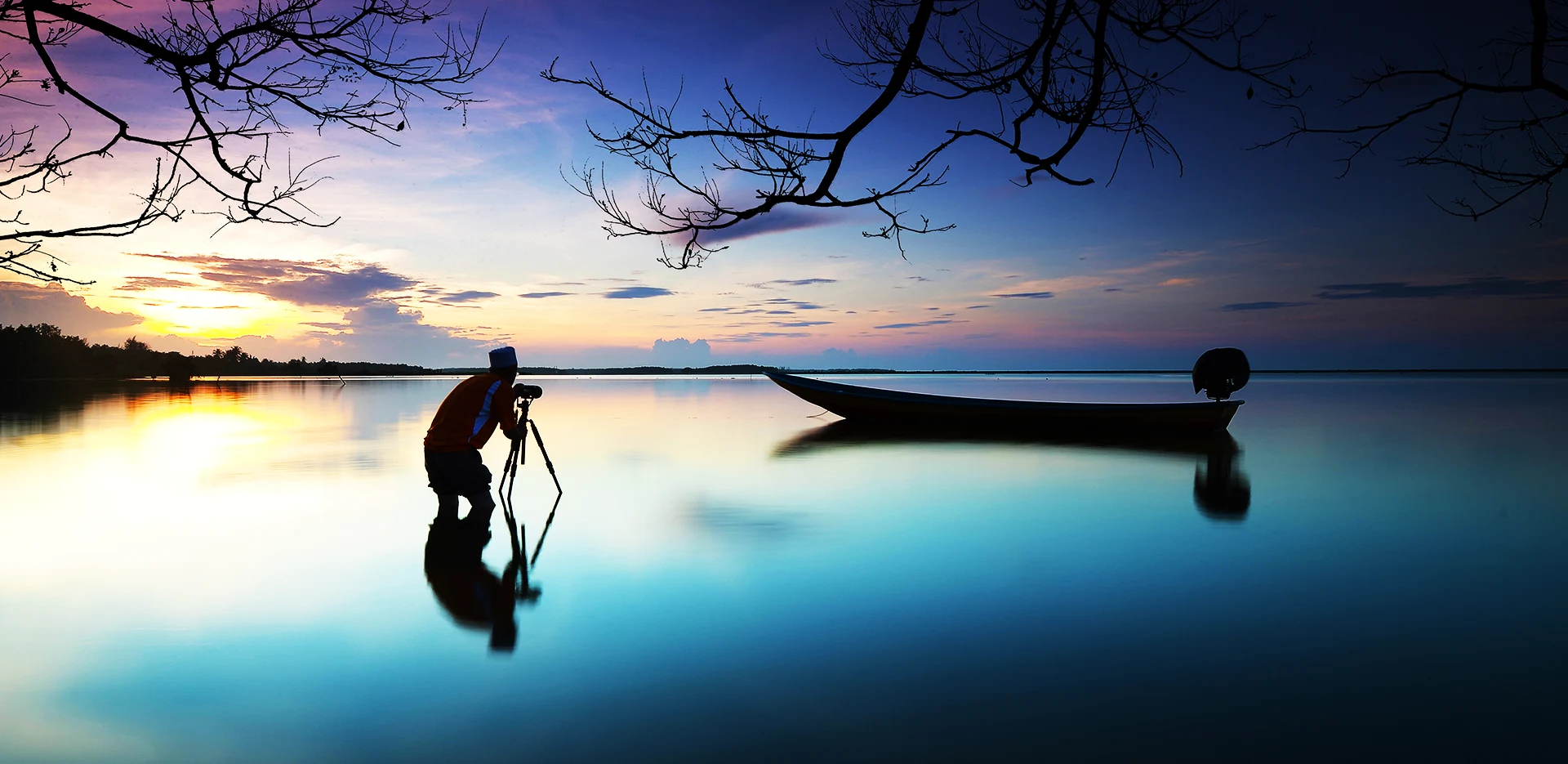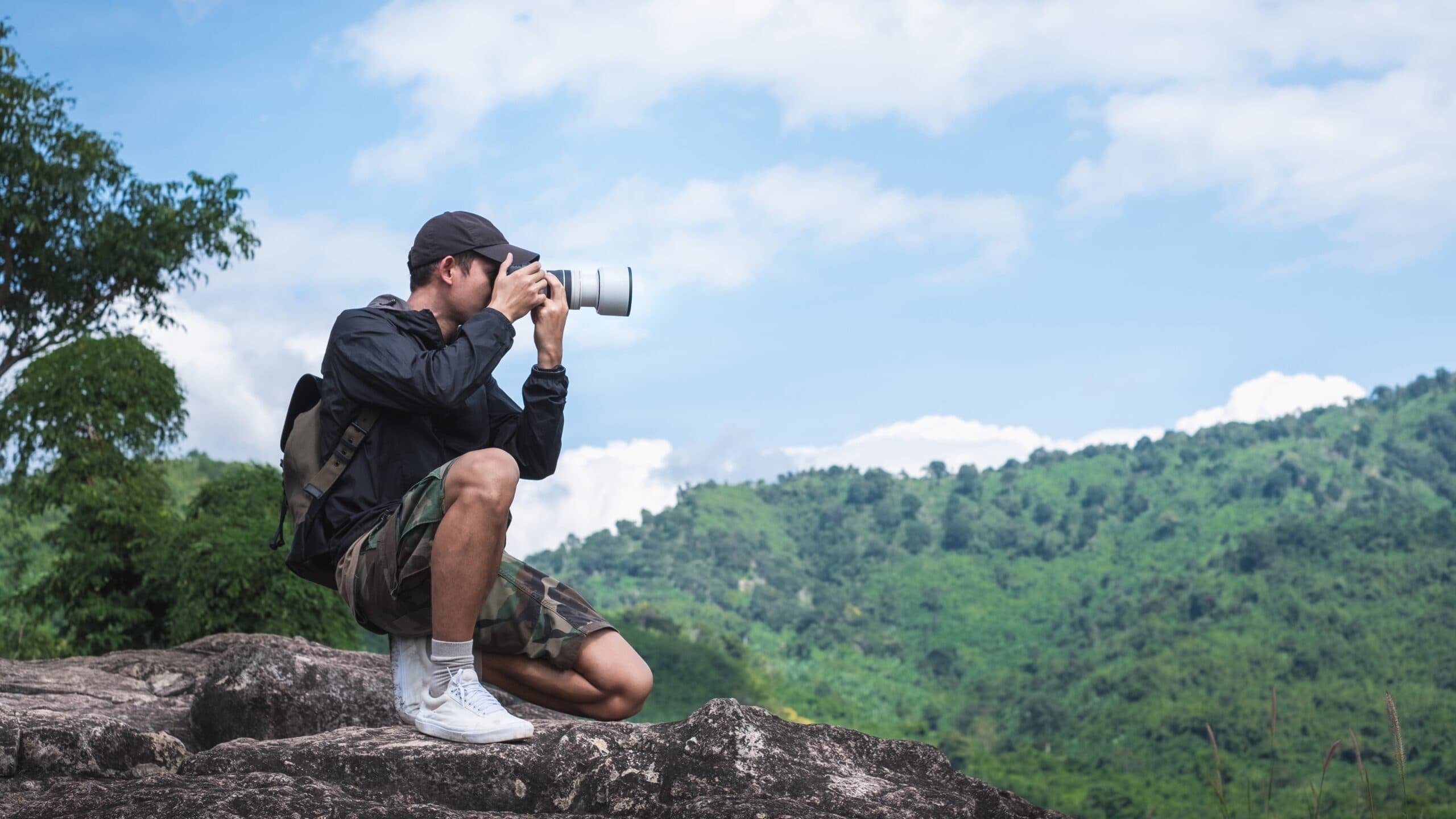Exploring Landscape Photography: Capturing the Beauty of Nature in Creative Activities

The Allure of Nature Through the Lens
Landscape photography stands as an enthralling exploration that invites photographers and nature enthusiasts alike to immerse themselves in the remarkable beauty of the natural world. From the towering peaks of the Rockies in Colorado to the serene beaches of Malibu, each captured moment serves as a testament to nature’s grandeur. This genre not only showcases awe-inspiring vistas but also opens doors for creative expression, allowing photographers to convey their personal interpretation of the environment.
The subjects one can encounter in landscape photography are as diverse as the land itself. Here are some stunning themes to consider:
- Mountain Landscapes: The sheer scale and majesty of mountain ranges offer limitless opportunities for exploration. Take, for example, the breathtaking views of the Tetons in Wyoming; these rugged cliffs and serene alpine lakes provide an ever-changing palette for photographers, depending on the time of day and the season.
- Coastal Scenes: The dramatic interaction between water and land results in visually striking compositions. The shifting tides, crashing waves, and coastal erosion in places like Acadia National Park in Maine provide photographers with countless opportunities to capture the dynamic essence of the seacoast.
- Desert Landscapes: The arid regions of the Southwest, including landmarks like Monument Valley in Arizona, present unique textures and hues that challenge traditional notions of beauty. The interplay of shadow and light during sunrise or sunset can create unforgettable images that showcase the stark yet mesmerizing landscape.
- Forests and Woodlands: The enchanting atmosphere of forests like the Redwoods in California is enhanced by the delicate dance of light filtering through the leaves. Capture the mystical quality of fog rolling through the trees or the vibrant colors of autumn foliage to convey the forest’s seasonal transformations.
One thrilling aspect of landscape photography is its accessibility. With just a camera—be it a professional DSLR or a smartphone—along with a bit of knowledge and a thirst for discovery, the art of transforming everyday scenes into extraordinary visuals is within reach. Understanding the basics of composition, such as the rule of thirds and leading lines, can fundamentally alter how moments are captured, turning a simple shot into a visually compelling story.
This article will delve deeper into essential tips and techniques crucial for capturing the beauty of nature. We will explore how to harness natural light, utilize various compositions effectively, and maximize the potential of your equipment. So, prepare for an exhilarating journey through the scenic wonders of landscape photography, encouraging you to tread into uncharted territories and discover the artistry inherent in the world around us.
EXplore MORE: Click here to discover the vital role of manual skills in creativity

Essential Techniques for Capturing Nature’s Splendor
To truly encapsulate the stunning beauty of the outdoors, a landscape photographer must develop a keen eye for detail and an understanding of several essential techniques. Mastering these fundamentals can elevate your photographs from simple snapshots to extraordinary artistic expressions. Here are some key techniques to consider that will enhance your landscape photography portfolio:
- Golden Hour Magic: The time just after sunrise and just before sunset, known as the golden hour, is revered by photographers for its dreamlike lighting. The warm hues and soft shadows create enchanting scenes, transforming everyday landscapes into something truly spectacular. Optimize your shooting schedule to take advantage of these moments—often, a scene can look merely average in flat daylight but achieve striking beauty during these magical hours.
- Understanding Depth of Field: Manipulating depth of field can profoundly impact your images. A wide aperture can create a creamy bokeh effect, isolating a foreground subject, whereas a narrow aperture ensures maximum sharpness throughout the frame, crucial for vast landscapes covering everything from the sky to the foreground. Experimenting with various settings can help you find the perfect balance between focus and blur.
- Leading Lines: Utilize natural lines found in the landscape—such as rivers, roads, or ridges—to draw the viewer’s eye toward the main subject of your photograph. Leading lines can create a sense of depth and movement, guiding the audience through your composition and engaging them with the scene.
- Compositional Techniques: Mastering various compositional techniques, such as framing, symmetry, and the rule of thirds, can transform a simple composition into an extraordinary one. For instance, placing the horizon line in one-third of the frame rather than directly in the center creates a more dynamic and interesting photograph. These techniques help create visual flow and attract attention to the elements you wish to highlight.
- Post-Processing Proficiency: In today’s digital age, effective post-processing can significantly enhance your final images. Programs like Adobe Lightroom and Photoshop offer tools to adjust exposure, contrast, and color saturation. Editing is an essential part of the creative process and can help highlight the nuances of a landscape, ensuring that the final product is an authentic representation of your artistic vision.
By familiarizing yourself with these key facets of landscape photography, you open new avenues for creative expression. Each technique not only assists in capturing nature’s breathtaking beauty but also allows for personal expression through the unique lens you bring to each scene.
As we delve deeper into this exploration of landscape photography, remembering to embrace the journey and the unpredictable nature of the outdoors is essential. Each outing presents a fresh opportunity to improve upon your craft, discover new locations, and develop a unique artistic voice. Prepare for a transformative experience as you forge connections with the world around you through the lens of your camera.
Exploring Landscape Photography Techniques
When it comes to landscape photography, capturing the natural beauty of our surroundings involves a strategic approach and an artistic eye. The following techniques can elevate your photography and help you convey the stunning essence of nature through your lens.
Understanding Light Conditions
Light plays a pivotal role in photography. Early mornings and late afternoons, known as the “golden hours,” provide soft, diffused lighting that enhances colors and reduces harsh shadows. Composing your shots during these times can create breathtaking images that truly reflect the beauty of the landscape. Additionally, understanding the interplay of natural light with atmospheric conditions such as fog or rain can add a unique mood to your photographs.
Utilizing Composition Techniques
Composition is vital in guiding the viewer’s eye and delivering a compelling story through your photographs. Familiarizing yourself with techniques such as the rule of thirds, leading lines, and framing can significantly improve the impact of your images. Using these methods helps in creating a well-balanced photograph that captures the viewer’s attention. Incorporating foreground elements can also add depth and perspective to your landscapes.
Incorporating Creative Elements
To push your landscape photography further, consider integrating creative elements such as long exposures and time-lapse photography. Long exposure techniques can create ethereal water effects, while time-lapses capture the essence of changing landscapes, illustrating nature’s rhythm over time. Experimenting with different techniques not only enhances your portfolio but also increases your creative expression.
Post-processing for Enhancement
Post-processing is a critical component of modern landscape photography. Utilizing software, such as Adobe Lightroom or Photoshop, allows photographers to enhance colors, adjust exposure, and refine details, leading to a polished final image. By understanding the basics of editing, you can amplify the emotions and visual storytelling of your captured landscapes, making them even more appealing to your audience.
| Technique | Advantages |
|---|---|
| Natural Lighting | Enhances colors and reduces shadows, adding depth to photographs. |
| Composition Techniques | Guides viewer’s eye and creates a captivating visual narrative through balanced elements. |
| Creative Elements | Increases artistic expression and allows for unique interpretations of landscapes. |
| Post-processing | Enhances visual appeal and can significantly improve the overall impact of photographs. |
This overview of techniques highlights just a few ways to engage with landscape photography. Each method invites you to explore the vast potential of nature’s beauty through your creative lens. Whether you are a novice or seasoned photographer, these practices can inspire greater adventures in capturing the breathtaking landscapes that surround us.
DIVE DEEPER: Click here to discover creative crafting ideas
Advanced Techniques to Elevate Your Landscape Photography
With a solid foundation in essential techniques, landscape photographers can further cultivate their skills by diving into more advanced methods that can transform their work. These techniques not only enhance visual storytelling but also allow for deeper emotional connections with the audience. Discover the following advanced strategies to elevate your landscape photography:
- Long Exposure Photography: Capturing movement within the landscape, such as flowing water or drifting clouds, can add a unique dynamic to your images. Long exposure photography involves using a slow shutter speed to create a sense of motion. When photographing a waterfall, for example, employing a shutter speed of several seconds can turn rushing water into a silky veil. This technique emphasizes the beauty of nature’s flow and creates a dramatic effect that can engage viewers’ imaginations.
- Foreground Interest: A well-composed photograph thrives on depth and dimension. Incorporating foreground elements, such as rocks, flowers, or fallen trees, can create layers that lead the viewer’s eye into the photograph. By placing significant elements in the foreground, you can not only enhance the three-dimensionality of the frame but also provide context to the scene, encouraging the audience to immerse themselves in the experience.
- Multi-Image Stitching: To capture vast landscapes that cannot be encompassed in a single frame, consider using multi-image stitching. This technique involves taking multiple overlapping photos and combining them during the editing process to create a panorama. This method is particularly useful in expansive environments like the majestic vistas of national parks, where the grandeur of the landscape often exceeds the capacity of a standard lens.
- Using Filters: Filters can serve as valuable tools for landscape photography, allowing for greater control over light and exposure. A polarizing filter can saturate colors and eliminate reflections on water surfaces, yielding clearer images of lakes and rivers. Similarly, neutral density (ND) filters enable photographers to extend exposure times in bright conditions without overexposing the shot, making long exposures possible even during the day.
- Shooting in RAW Format: Capturing images in RAW format allows for more extensive editing capabilities post-shoot. RAW files retain much more data than JPEGs, facilitating significant adjustments to exposure, color, and detail without sacrificing image quality. By shooting in RAW, landscape photographers can fully exploit their creative vision, ensuring their work reflects their true artistic style.
- Researching Your Locations: Understanding the locations you intend to photograph can vastly improve your results. Familiarize yourself with local weather patterns, seasonal changes, and key landmarks. Resources like photography workshops or online forums can offer insights and tips from fellow photographers, broadening your understanding of potential composition opportunities. Knowledge of your environment enriches your photography experience and can lead to unexpected creative discoveries.
As you incorporate these advanced techniques into your landscape photography, remember that practice is paramount. The more time spent experimenting with these concepts, the more they become second nature. Every new landscape presents a fresh canvas, waiting to be painted through your unique perspective and skill set. Embrace the creative challenges, and allow nature to guide your artistic journey.
DISCOVER MORE: Click here for delicious inspiration
Conclusion: Fostering a Deeper Connection with Nature Through Landscape Photography
In summary, landscape photography serves as a powerful medium for artists and enthusiasts alike to encapsulate the breathtaking beauty of our natural world. By implementing essential techniques and exploring advanced strategies, photographers can create images that not only showcase stunning vistas but also tell compelling stories and evoke profound emotions. The marriage of creativity, technical skill, and a deep understanding of one’s environment fosters a richer experience for both the photographer and the viewer.
The essence of landscape photography goes beyond mere capture; it encourages an intimate dialogue with nature. Whether through long exposure techniques that reveal the fluidity of water, or foreground elements that enhance depth, each photograph emerges as a unique expression of the world around us. Moreover, the strategic use of filters, multi-image stitching, and capturing in RAW format equips photographers to push their creative boundaries and yield stunning results.
As you embark on your journey into landscape photography, remember the significance of exploration. Seasons change, light shifts, and each moment presents a fresh opportunity to witness the universe’s majesty. Engage with local communities and resources to continue learning, and embrace the challenge of experimentation. Every photograph has the potential to inspire and connect, reminding us of the importance of preserving the natural world. Dive into this creative activity, and you may discover not only the beauty of landscapes but also an enduring passion that rejuvenates your spirit and stimulates your creativity.


